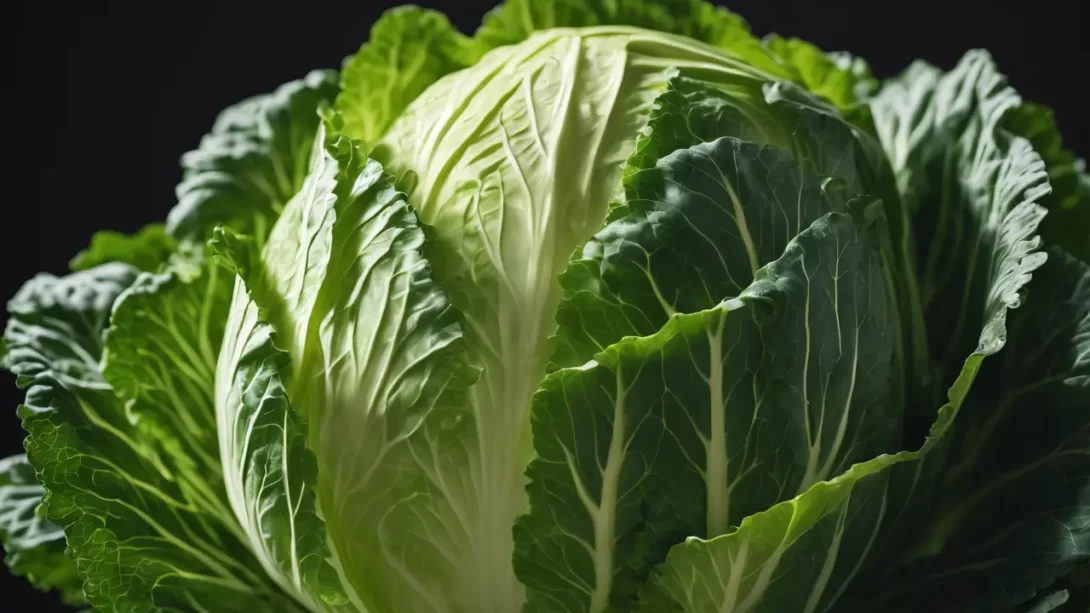Cabbage, a staple in many diets worldwide, is prized for its nutritional value and culinary versatility. However, in situations where refrigeration is unavailable or limited, storing cabbage for extended periods can be challenging. This article aims to explore effective methods to store cabbage without relying on refrigeration, ensuring it remains fresh and nutritious for as long as possible.
Cabbage Preservation
The key to successful cabbage preservation lies in understanding the factors that contribute to its spoilage:
- Temperature and Humidity: Cabbage is best preserved in cool, humid conditions. Extreme temperatures and dry air can hasten spoilage.
- Air Circulation: Proper ventilation is crucial in preventing mold and rot.
- Selection: For long-term storage, choose firm, dense cabbage heads with tightly packed leaves and no signs of damage or decay.
Knowing these factors aids in selecting the most suitable storage method for your environment.
Traditional Methods of Cabbage Storage
Several traditional methods have proven effective for storing cabbage without refrigeration:
In a Cool, Dry Place
One of the simplest ways to store cabbage is in a cool, dry place, such as a cellar, basement, or a cool pantry. Here’s how to do it:
- Ideal Conditions: Store cabbage in an area with a temperature range between 32°F and 40°F (0°C and 4°C) and relative humidity of 80-90%.
- Positioning: Hang the cabbage upside down by its stalks or place them on a shelf, ensuring they don’t touch each other to promote air circulation.
- Regular Checks: Inspect the cabbages regularly for signs of spoilage and use any that start to soften or show blemishes first.
Burial in Sand or Sawdust
This method mimics root cellar conditions and is particularly useful in environments lacking natural cool spaces:
- Preparation: Use a container like a wooden crate or a cardboard box and fill it with clean, moist sand or sawdust.
- Storing the Cabbage: Place the cabbage heads in the sand or sawdust, ensuring they are fully covered and not touching each other.
- Advantages and Drawbacks: This method can keep cabbages fresh for several months. However, it requires checking periodically for moisture levels and signs of spoilage.
Fermentation
Fermenting cabbage is a time-honored method that not only preserves it but also enhances its nutritional value:
- Making Sauerkraut: Chop or shred the cabbage, mix it with salt, and pack it tightly into a clean, airtight container. The salt draws out the liquid, creating an environment where beneficial bacteria can thrive and ferment the cabbage.
- Storage Conditions: Store the fermenting cabbage in a cool, dark place. The fermentation process can take several weeks, and the sauerkraut can last for several months under the right conditions.
- Benefits: Fermented cabbage, like sauerkraut, is rich in probiotics and has an extended shelf life without the need for refrigeration.
Using a Root Cellar
A root cellar, or a similar underground storage space, offers ideal conditions for storing cabbage:
- Preparation: Ensure your root cellar is clean, ventilated, and maintains a consistent cool temperature and high humidity.
- Storing Cabbage: Place the cabbages on shelves or in crates. Ensure they don’t touch each other to allow for air circulation and reduce the risk of rot spreading.
- Co-storage: Cabbages can be stored with other root vegetables, but avoid storing them with fruits like apples, which emit ethylene gas that can hasten spoilage.
Wrapping Techniques
Wrapping individual heads of cabbage can extend their shelf life:
- Materials: Use breathable materials like newspaper or a cloth to wrap each cabbage head. This method helps maintain humidity while allowing for some air circulation.
- Inspection and Rotation: Regularly inspect wrapped cabbages for any signs of spoilage. Rotate their position to ensure that the outer leaves do not become overly dry.
- Storage Location: Store the wrapped cabbages in a cool, dry place. A basement or cellar is ideal, but any space that stays consistently cool can work.
Modern Alternatives Without Refrigeration
In addition to traditional methods, there are modern techniques that can be effective in preserving cabbage without refrigeration:
- Specialized Storage Containers: Use containers designed to regulate ethylene gas, which can accelerate spoilage. These containers often have features that allow for adjustable ventilation, helping to maintain the right balance of humidity and airflow.
- Ethylene Gas Absorbers: These commercially available products absorb the ethylene gas released by vegetables, slowing down the ripening process. Placing them near your stored cabbages can help extend their freshness.
- Comparison with Traditional Methods: While these modern solutions can be effective, they often require initial investment and are more suitable for short-term storage compared to methods like fermentation or using a root cellar.
Conclusion
Storing cabbage without refrigeration is entirely feasible, using either traditional methods rooted in history or modern techniques that leverage contemporary technology. Whether you choose fermentation, root cellaring, wrapping, or modern storage solutions, the key factors remain consistent: cool temperatures, proper humidity, and adequate air circulation.
Each method has its advantages and may suit different needs and environments. For instance, fermentation not only preserves cabbage but also enhances its flavor and nutritional value, while methods like sand or sawdust burial are excellent for long-term storage. Modern alternatives, on the other hand, offer convenience and are ideal for those with limited space or resources to implement traditional methods.
By understanding these various methods and considering your specific circumstances, you can effectively store cabbage for extended periods without the need for refrigeration. This not only reduces food waste but also ensures a continuous supply of this nutritious and versatile vegetable. Experiment with different techniques to find the one that best meets your needs and enjoy the benefits of having fresh cabbage available year-round.



